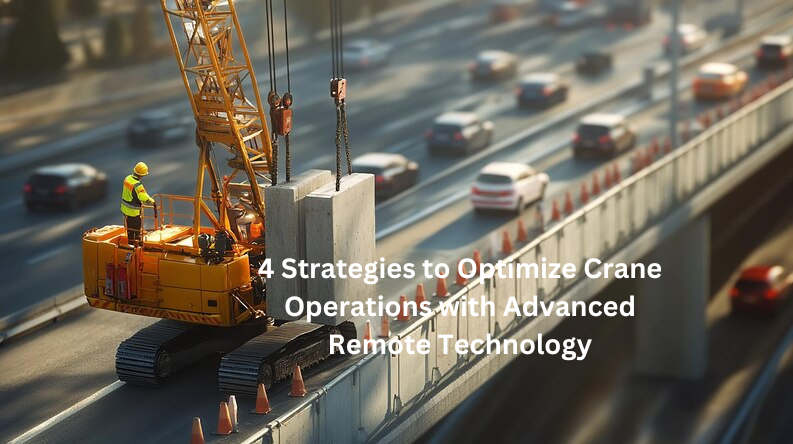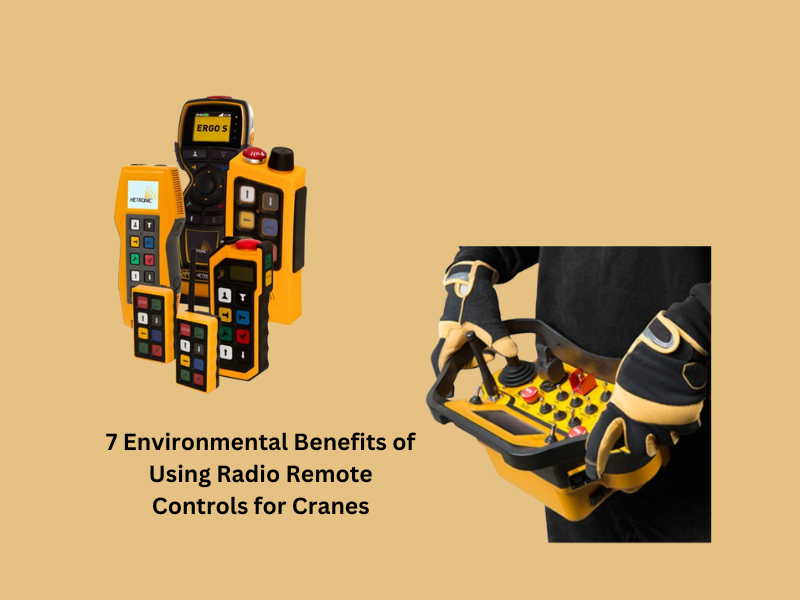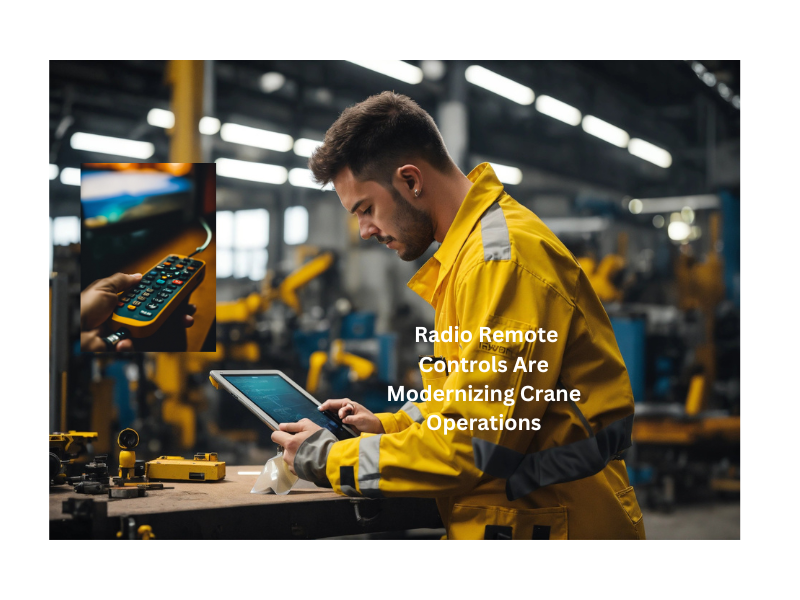In today’s fast-paced construction industry, optimizing crane operations is no longer a luxury—it’s a necessity. With project deadlines tightening and safety concerns at an all-time high, construction managers are turning to advanced remote technology to revolutionize their crane operations. This article dives deep into four ground breaking strategies that will transform your job site, boost productivity, optimize crane operations and set new standards in the industry.
Introduction: Optimize Crane Operations
The construction landscape is evolving at breakneck speed, and crane operations are at the forefront of this technological revolution. As we step into a future where efficiency and safety are paramount, the integration of advanced remote technology in crane operations has become a game-changer. But what exactly does this mean for your projects, and how can you harness these innovations to stay ahead of the curve?
In this comprehensive guide, we’ll explore four cutting-edge strategies that are redefining crane operations across the globe. From real-time monitoring systems to AI-powered predictive maintenance, these technologies are not just improving operations—they’re completely transforming the way we approach construction projects.
Strategy 1: Embrace Real-Time Monitoring for Unparalleled Oversight
The Power of Constant Vigilance
Real-time monitoring systems have emerged as a cornerstone of modern crane operations. These advanced systems provide a continuous stream of data, offering unprecedented visibility into every aspect of crane performance and jobsite conditions.
Key Benefits:
– Instant access to critical operational data
– Proactive identification of potential issues
– Enhanced safety through constant oversight
– Improved decision-making capabilities
Implementation Tips:
- Choose the Right System: Select a monitoring solution that integrates seamlessly with your existing infrastructure.
- Train Your Team: Ensure all personnel are well-versed in interpreting and acting on the data provided.
- Establish Clear Protocols: Define response procedures for various scenarios identified through monitoring.
Real-World Impact:
According to a recent industry study, construction sites that implemented real-time monitoring systems saw a 35% reduction in crane-related incidents and a 28% increase in operational efficiency.
FAQ: How does real-time monitoring improve safety?
Real-time monitoring provides instant alerts on potentially hazardous conditions, such as excessive wind speeds or load imbalances. This allows operators to take immediate corrective action, significantly reducing the risk of accidents.
Strategy 2: Leverage Remote Control Technology for Precision and Safety
Mastering the Art of Distance
Remote control technology has revolutionized crane operations, allowing operators to control cranes from a safe distance with unprecedented precision.
Advantages:
– Enhanced operator safety
– Improved visibility and control in challenging environments
– Reduced physical strain on operators
– Increased operational flexibility
Best Practices:
- Invest in High-Quality Equipment: Choose remote control systems with robust signal strength and fail-safe mechanisms.
- Conduct Regular Training: Keep operators up-to-date with the latest remote control techniques and safety protocols.
- Implement Redundancy: Have backup systems in place to ensure continuous operation in case of primary system failure.
Industry Insights:
A survey of construction firms revealed that those utilizing remote control technology experienced a 40% reduction in operator-related injuries and a 25% increase in precision lifting capabilities.
FAQ: Can remote control technology be used for all types of cranes?
While remote control systems are increasingly versatile, their applicability depends on the specific crane type and jobsite conditions. Most modern mobile cranes and tower cranes are compatible with remote control technology, but it’s essential to consult with manufacturers and conduct thorough assessments before implementation.
Strategy 3: Harness the Power of AI and Machine Learning for Predictive Maintenance
From Reactive to Proactive: The Future of Crane Maintenance
Artificial Intelligence (AI) and Machine Learning (ML) are revolutionizing crane maintenance, shifting the paradigm from reactive to predictive approaches.
Key Advantages:
– Early detection of potential equipment failures
– Optimized maintenance schedules
– Reduced downtime and operational costs
– Extended equipment lifespan
Implementation Strategy:
- Data Collection: Install sensors to gather comprehensive operational data.
- AI Model Development: Collaborate with tech experts to create AI models tailored to your crane fleet.
- Integration: Seamlessly incorporate predictive maintenance insights into your existing maintenance protocols.
- Continuous Improvement: Regularly update and refine your AI models based on new data and outcomes.
Impressive Results:
Early adopters of AI-driven predictive maintenance report a staggering 70% reduction in unexpected breakdowns and a 25% decrease in overall maintenance costs.
FAQ: How does AI predict equipment failures?
AI algorithms analyze vast amounts of historical and real-time data from crane sensors, identifying patterns and anomalies that may indicate impending failures. By recognizing these early warning signs, AI can predict potential issues before they escalate into major problems, allowing for timely interventions.
Strategy 4: Implement Virtual and Augmented Reality for Enhanced Training and Planning
Bridging the Gap Between Virtual and Real
Virtual Reality (VR) and Augmented Reality (AR) technologies are transforming crane operator training and project planning, offering immersive and risk-free environments for skill development and scenario testing.
Benefits:
– Safe, realistic training scenarios
– Improved spatial awareness and planning
– Reduced training costs and time
– Enhanced project visualization and stakeholder communication
Implementation Guide:
- Develop Custom Scenarios: Create VR/AR simulations that accurately reflect your specific jobsite challenges.
- Integrate with Existing Training: Blend VR/AR experiences with traditional training methods for a comprehensive approach.
- Utilize for Project Planning: Leverage AR for on-site visualization of crane placement and operation.
- Continuous Updates: Regularly update VR/AR content to reflect new equipment and safety standards.
Industry Impact:
Construction firms utilizing VR/AR for crane operator training report a 60% improvement in trainee performance and a 45% reduction in on-the-job errors during the first six months of implementation.
FAQ: How does VR/AR training compare to traditional methods?
VR/AR training offers a unique blend of realism and safety, allowing operators to practice complex maneuvers and emergency procedures without risk. While it doesn’t entirely replace hands-on experience, it significantly accelerates the learning curve and enhances overall competence.
Conclusion: Embracing the Future of Crane Operations
As we’ve explored, the integration of advanced remote technology in crane operations is not just a trend—it’s a transformative force reshaping the construction industry. By embracing these four strategies—real-time monitoring, remote control technology, AI-driven predictive maintenance, and VR/AR training—construction firms can dramatically enhance safety, efficiency, and productivity.
The benefits are clear:
– Reduced accidents and improved safety records
– Increased operational efficiency and productivity
– Significant cost savings through optimized maintenance and training
– Enhanced project planning and stakeholder communication
As we look to the future, it’s evident that those who adapt to these technological advancements will lead the industry, setting new standards for excellence in crane operations. The question is no longer whether to implement these strategies, but how quickly you can integrate them into your operations to stay competitive in an ever-evolving landscape.
Remember, the journey to optimization is ongoing. Continuously evaluate new technologies, invest in your team’s skills, and stay open to innovation. By doing so, you’ll not only optimize your crane operations but also position your company at the forefront of the construction industry’s technological revolution.
Are you ready to revolutionize your crane operations and set new benchmarks in efficiency and safety? The future of construction is here—and it’s powered by advanced remote technology. Embrace these strategies today, and watch your projects soar to new heights of success.





